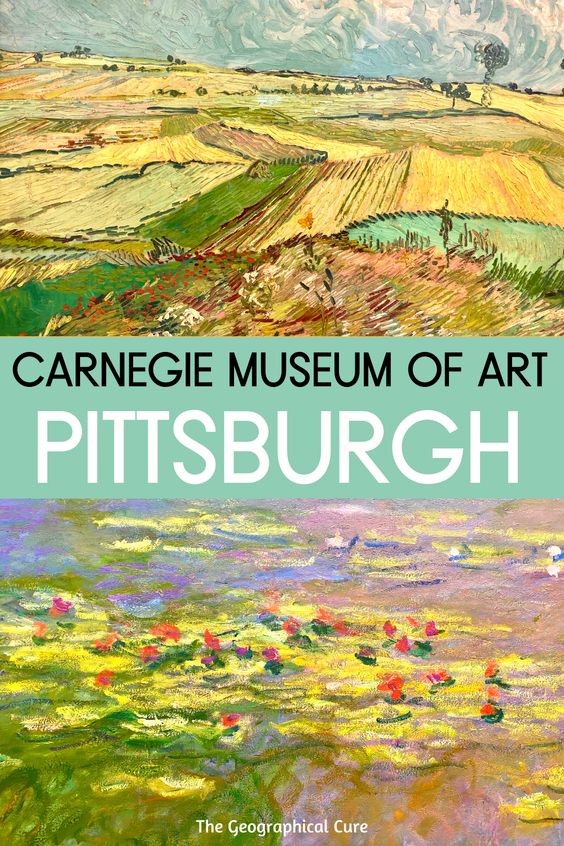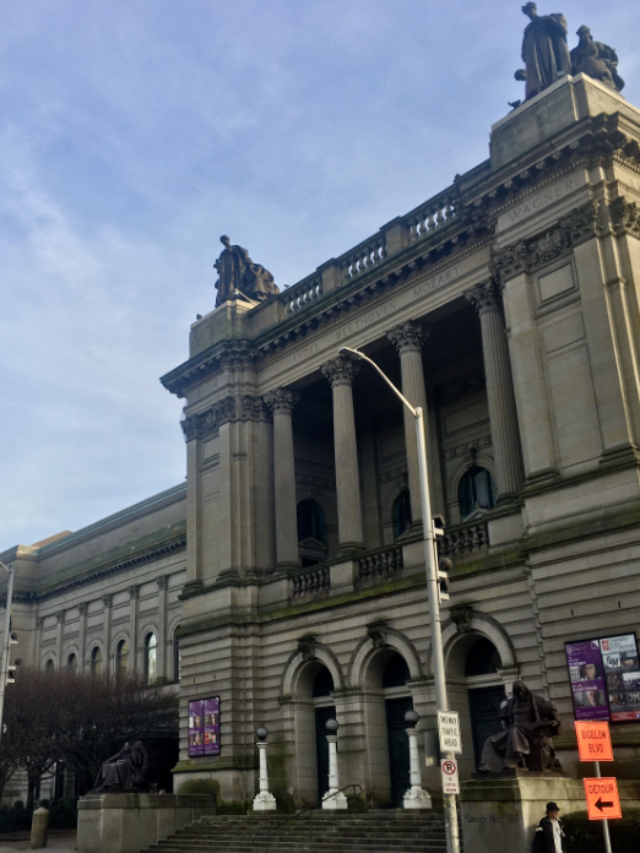Introduction
As one enters the Museum, they are immediately transported to a world of artistic magnificence. The building’s architecture reflects the beauty of the art it houses. Sunlight shines through lofty windows, putting a warm glow on paintings and sculptures that tell stories about their creators’ vision and devotion. The air is filled with a calm reverence as visitors wander from one masterpiece to the next, pausing to examine the intricate intricacies and emotional expressions portrayed in each work of art. In this sanctuary of creativity and beauty, time stands still, allowing one to immerse oneself in the wonder of artistic expression. This is the story of one such museum in Pittsburgh, Pennsylvania, USA.
The Carnegie Museum of Art in Pittsburgh surprises visitors with its vast size and diverse collection of visual delights. Spread across numerous wings and dozens of galleries, the museum offers a journey through art from ancient times to the forefront of contemporary expression.
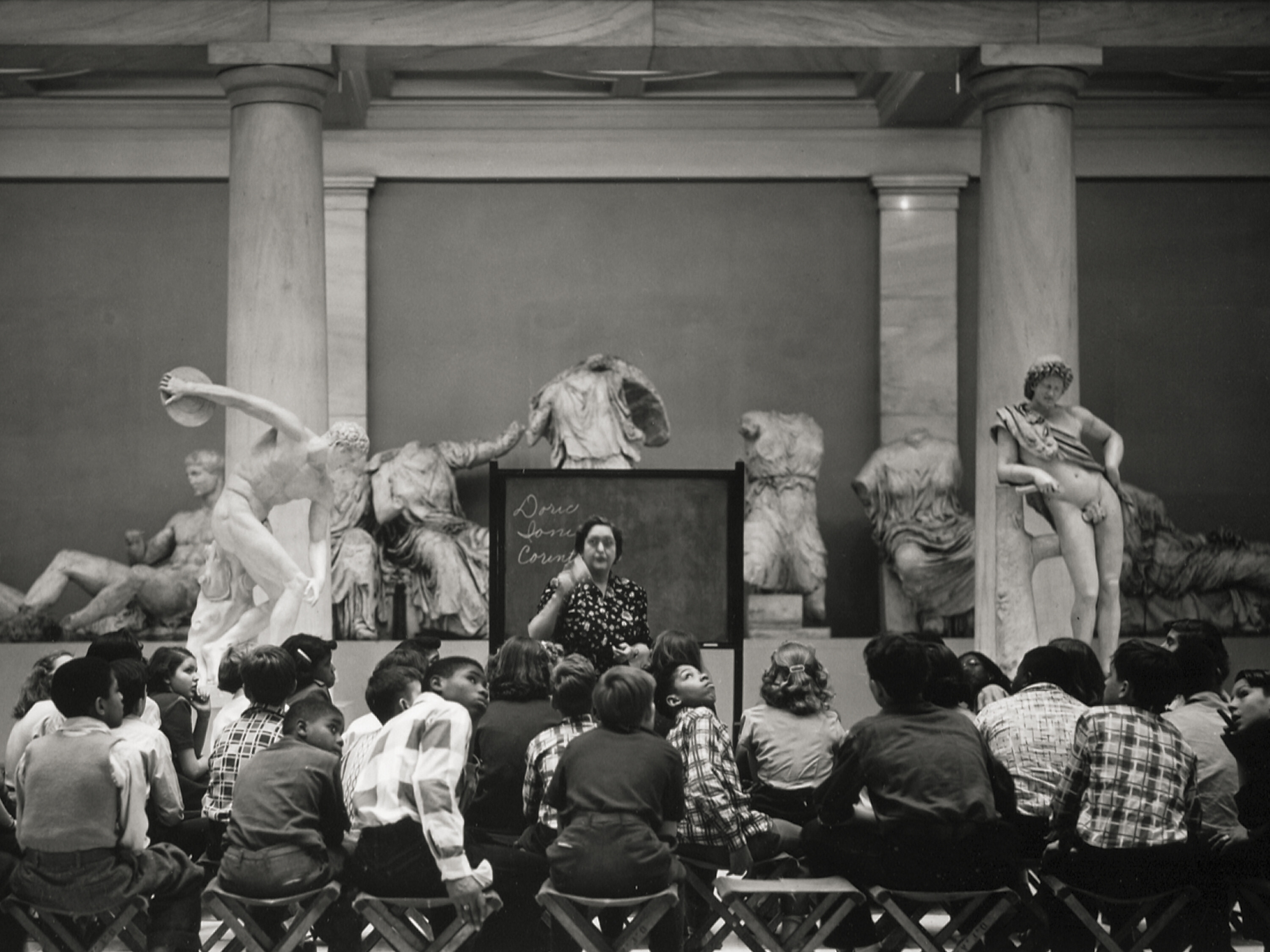
The Origins
Since its establishment in 1895, Andrew Carnegie envisioned a museum that would showcase not just ancient treasures but also the “old masters” of tomorrow. This forward-thinking approach makes CMOA a pioneer as the first museum of modern art in the United States, embodying Carnegie’s vision of art’s evolution through time. It was first built as Carnegie Institute which was jointly made with the library, however it soon changed and there came multiple museums within the same space – they were the Carnegie Museum of Art, Carnegie Museum of Natural History, Carnegie Science Centre, and The Andy Warhol Museum. Together, all these institutions not only reflected the history, heritage, and arts of the city but also American art. These quickly became the four important cultural institutions of the country representing the great arts, music, culture, cinema, literature, and theatre to the masses. Some of the early acquisitions made by the museum were modern works by budding American artists Winslow Homer, James McNeill Whistler, and Edward Hopper, which are still present in the museum’s premises, being its prized possessions. All these paintings reflect the great American art which the museum displays and stands for. Since then, the museum has acquired hundreds of works of art by artists such as Doris Salcedo, Hiroshi Sugimoto, Lynette Yiadom-Boakye, and many more.

Carnegie International – Renowned Exhibition of the Museum of Art
A brilliant example of curatorial finesse has been Carnegie International, which had its beginnings in 1896. This exhibition has grown over time from a juried show to a dynamic curatorial venture with an impact that goes beyond the museum’s walls. Each iteration of the International provides new insights into contemporary art, connecting broad audiences to artists that encapsulate the essence of our time. This continuing project not only transforms the museum and its communities but also has a long-term impact on the history of exhibition curation, rethinking the role of cultural institutions in generating cultural narratives and experiences. It is the longest-running exhibition in North America that shall be back for its 59th edition between May to Jan of next year.

Spaces and Galleries of the Museum
Beaux Art Galleries
There is a special section of the museum that has been gifted by Sarah Mellon Scaife who was the sister of Pittsburgh tycoon Richard Mellon. She donated the vast Beaux Art galleries and a spate of major items to CMOA. Her contribution alone nearly doubled the museum’s size. The Scaife galleries exhibit vast collections of European and American art spanning the Renaissance to the present. There is a significant collection of Impressionism. The collection is arranged in reverse chronological order, this gallery is present on the second floor of the museum, this was a donation made in the year 1974. The contemporary collection includes works dating from 1945 to the present which are exhibited in these halls. While Scaife’s 19th-century galleries which are the most popular part of the museum. The galleries contain paintings from 1850 to the present in 12 rooms. This covers the widely popular Impressionist, Post-Impressionist, and late nineteenth-century art.
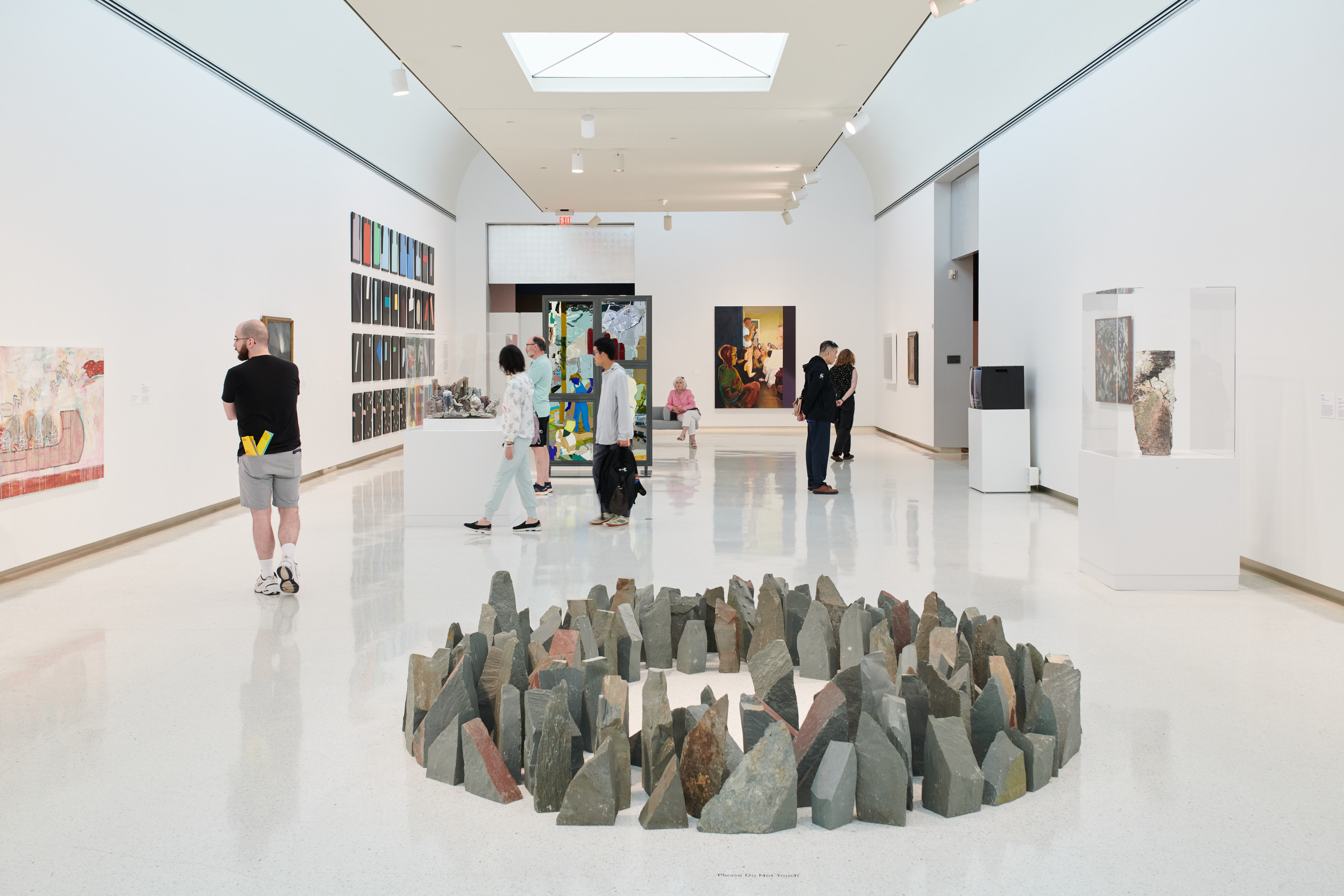
Alisa Mellon Bruce Gallery of Decorative Arts and Design
On the same floor is the Alisa Mellon Bruce Gallery of Decorative Arts & Design, this section of the Carnegie Museum of Art has around 34,000 ornamental pieces. They’re grouped chronologically and cover a wide range of visual art. There are glassworks, porcelain, pottery, wood carvings, china, and so on. The collection highlights the unusual in everyday objects. Gustav Stickley, the Roycrofters, and Charles Rene Mackintosh all created designs that one can easily spot here. The Bruce Galleries also feature contemporary designs and crafts in glass, wood, ceramics, and metal.

The Heinz Architecture Centre
On the same floor, one would find The Heinz Architecture Centre which hosts temporary exhibitions, featuring room after room with high ceilings. While on the first floor, one would find the Carnegie Hall of Sculptures, the Hall of Architecture, and the Forum Gallery. Speaking about the Heinz Architecture Gallery, The Heinz Architectural Center was founded in 1990 and showcases great designs and models of architecture that are seen nationally and internationally and has over 6000 objects including photographs, drafts, drawings, artifacts, etc. Then there is the Hall of Architecture, which is an extension of the Heinz Center which is full of plaster works of art reflecting the ancient, medieval structures. These were painstakingly and beautifully crafted by skilled craftspersons to showcase the most iconic structures present in the world.

The Grand Staircase and Mural
One of the main attractions of the museum is the grand staircase and the mural. Crafted from marble, the staircase exudes elegance and grandeur. However, what truly captures one’s gaze is the expansive mural adorning approximately 5,000 square feet of wall space. Titled “The Crowning of Labor,” this mural reflects the ideals of uplift and progress emblematic of the turn-of-the-century ethos, celebrating the rewards of diligent labor.
Other important structures to note are the Open sculptural court and Hall of Sculptures which houses some of the classical pieces.
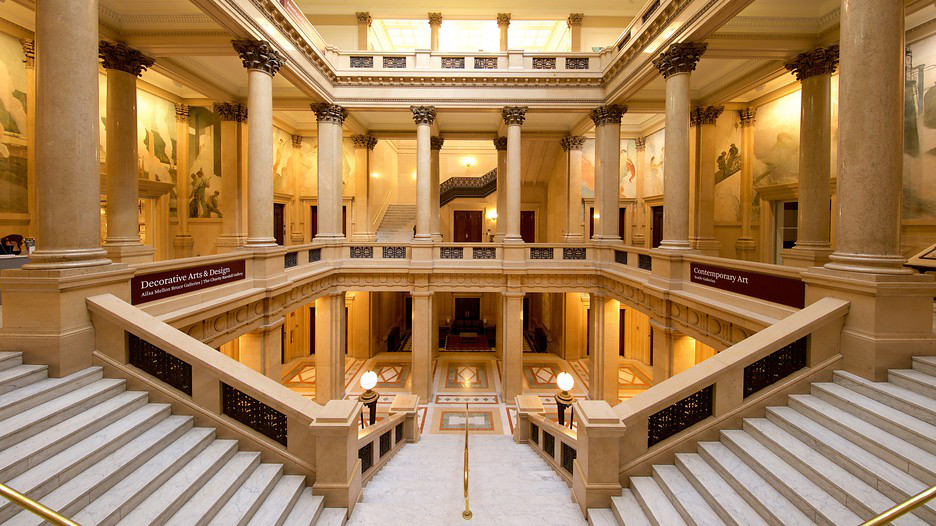
The Carnegie Museum of Art has evolved into a comprehensive creative hub, covering decorative arts, design, photography, film, video, Asian art, and African art. Its extensive collections and shows not only enrich Pittsburgh’s cultural landscape but also make significant contributions to global artistic discussion. As a vital resource, the museum continues to inspire and educate visitors, connecting the past and present and cultivating a greater awareness of art’s transformational potential.
References
- https://carnegieart.org/about/our-story/
- https://www.nytimes.com/2022/11/03/arts/carnegie-international-exhibition-pittsburgh.html
- https://www.thegeographicalcure.com/post/guide-to-the-carnegie-museum-of-art-in-pittsburgh
- https://www.aronson.com/museums/carnegie-museum-of-art-pittsburgh/
A Brief History of Mystical ”Seven Magic Mountains” of Las Vegas

